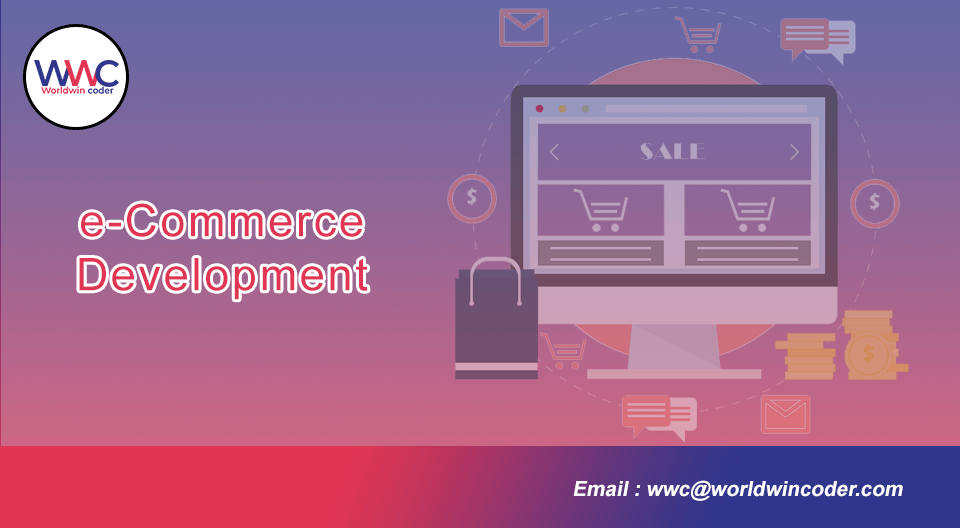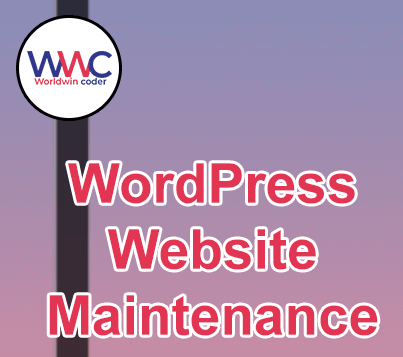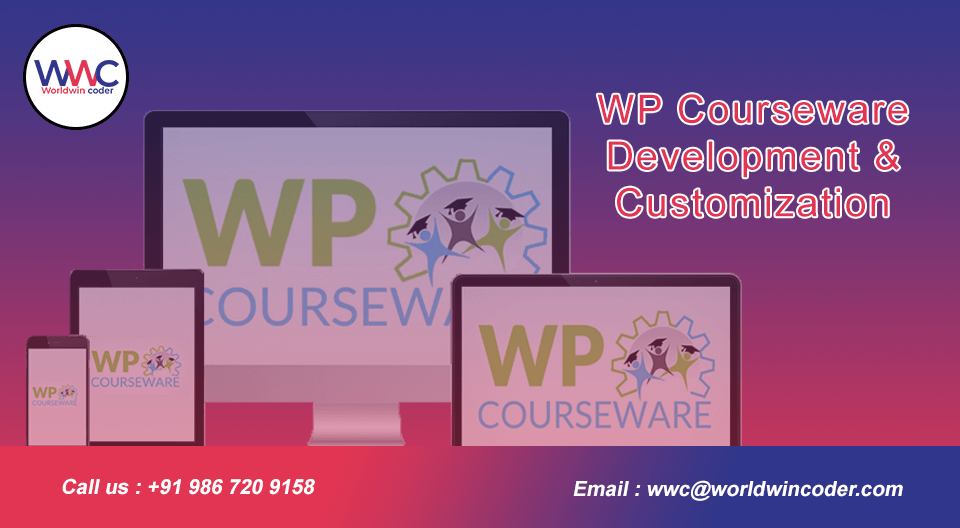
by Vishavjeet | Dec 28, 2023 | blog, Digital Marketing
With the evolving technology, there is more ease in doing trivial chores and business operations. Because of the rise of mobile applications in the e-commerce sector, many people are reaping benefits from it. This includes both the businesses and customers who are immensely grateful for this B2B marketplaces invention.
Online B2B marketplaces play a critical role in building a bridge between buyers and sellers and letting new businesses develop their voice through the internet. They play a key role in discovering new products that are equally helpful for clients and for retailers and manufacturers.
E-commerce applications now play a significant role in maintaining the global trade of any country. Industries are equally affected by this change that has transformed the whole phenomenon of buying and selling goods. In 2022, sales in the e-commerce sector exceeded the limit of 5.7 trillion U.S. dollars worldwide and are only predicted to grow in the upcoming years.
List Of The Top 10 B2B Marketplaces In The World For The Year 2024
The businesses are expanding at an exponential rate to meet the needs of the growing population. Among this, there is a dire need for authentic and verified marketplaces that customers can easily trust with their personal and financial information.
eWorldTrade has remained a pioneering B2B marketplace of the world with its 10 years of expertise in the e-commerce sector. They have built around 500,000 registered users with their extreme dedication and commitment to staying true to their values and goals. Moreover, they provide numerous benefits to their sellers and buyers to keep up with their positive brand name and services.
Benefits
One-stop Solution– eWorldTrade has worked hard to stay one step ahead of its competitors and address all the new market changes and trends.
Transparent Operations– They provide complete transparency in their operations to their clients, whether they are businesses or customers purchasing goods.
Global Trade Shows- They also host global trade shows to increase the reach of their business customers and build a community of verified suppliers and manufacturers.
2. DH Gate
DH Gate is a Chinese B2B and B2C platform that is known for its exceptional services and goods that are shipped all around the world at competitive prices. They assist all types of businesses in reaching their goals and unleashing their potential.
Benefits
Affiliate Program- This program attracts potential partners who might be looking for a wholesale or manufacturing source to start their business.
Tracking- This feature allows their customers to track their products anytime they want and get updates about their parcels.
3. Amazon
Amazon is a well-known B2B marketplace that provides an inclusive environment with its latest and innovative features and technology. They gain their working drive from their customers rather than competitors and aim to make online shopping more safe and secure for them. They also want to help businesses in reaching their goals and milestones towards building a better platform.
Benefits
Eco-friendly Initiative- Amazon dedicatedly promotes the benefits of eco-friendly packaging and delivery that can greatly reduce greenhouse gas emissions and other problems threatening nature.
Many Subsidiaries- They also have multiple subsidiaries like Amazon Web Service, Amazon Prime Video, Amazon Prime, Amazon Music, Amazon Publishing, and so on to satisfy more needs of their customers.
Amazon News- This is another great section of options that provides the latest news and details about their every service along with any new change they are going to implement.
4. eBay
eBay ranks among one of the best B2B e-commerce marketplaces that has transformed the online marketplace. They provide numerous benefits guaranteed to provide comfort for customers and growth for businesses. Along with this, they have a huge directory of products about 1.9 billion, and verified sellers that have almost every product that you might desire.
Benefits
Artificial Intelligence- eBay leverages AI to provide seamless operations to their business customers to help them in their functions while saving a great deal of time and effort.
eBay Newsroom- This is an official news channel for eBay where they post their recent upgrades or inspire their clients about the latest achievements of their sellers and manufacturers.
5. Alibaba
Alibaba is a leading B2B marketplace for global trade that works mainly to make trade easier for local and international communities. They have about 200M+ products on their websites that cater to the needs of their millions of customers. This has also assisted them in building a loyal community of more than 200k suppliers that are from every possible industry and sector.
Benefits
Business Offerings- You can freely explore products and suppliers for your business through several offerings that are available at Alibaba.
Assured Quality- They are strict in maintaining the top-notch quality of their products and services that have made them come so far with a reliable name in the market.
Personalized Trading- They also provide tailored support that is needed for the growth of your business along with free samples of products.
6. Global Sources
Global Sources is an internationally recognized B2B sourcing platform that has been promoting authentic trade through its multichannel business subsidiaries. They provide its sellers with trustworthy market information and tailored sourcing solutions that will help them increase their reach. Global Sources serves about 10 million registered B2B buyers with quality products and services.
Benefits
Trade show- They also host trade shows in Hong Kong where they increase the brand visibility of their small and medium-sized businesses for partnership and community building.
Live Streaming- They also host virtual meetings and live streaming for their customers to showcase their new collection or holiday discounts that are powered by their AI.
Match- Match is their free, customized business matching service that carefully evaluates businesses’ sourcing requirements and matches accurate partners according to that.
7. EC Plaza
EC Plaza is a reliable B2B platform that provides both online and offline services to its 1,000,000 members. They have built a worldwide network where they cater to the needs of several businesses from every corner of the world.
Benefits
Refund & Return- This is a great benefit for their customers, it allows them to refund and return any parcel they want.
Unique Products- They also provide unique products that are specially curated for your business ventures with your designed logo and packaging.
8. EC21
EC21 was founded in 1997 by the Korea International Trade Association (KITA) which has helped all types of businesses from small startups to medium-sized businesses. They have a range of services and offices around d the world where they adequately address customers’ queries and problems. Moreover, they have a user-friendly interface that helps you navigate any product you want within seconds.
Benefits
TradeVerify- This is an authentication and verification service provided by EC21 to ensure their business partners that their platform is legal and they are indeed associated as a trading partner with them.
Agent Program- This program targets sales agents for their brands and opens new job opportunities for individuals interested in marketing their products with high profits and benefits.
Buying Leads- Another great thing about EC21’s platform is that they continuously renew their buying leads according to their customers and provide a chance for any manufacturer that is looking to sell that product.
9. Made in China
Made In China is a renowned B2B marketplaces that is committed to providing more business opportunities for small businesses in China. They provide millions of products manufactured from the Chinese market to all around the globe to increase their export rate. Furthermore, they serve more than 20,000,000 registered and satisfied buyers with high-quality products.
Benefits
Smart Expo- They conduct their smart expo annually where they present various technology and consumer goods targeting both consumers and businesses with numerous exhibitions.
Easy Sourcing- This is a great time-saving tool for buyers that allows them to post sourcing requests and get quotations from suppliers for free without wasting any kind of effort.
Video Channel- Made in China also has its video channel where it showcases its new products along with unboxing and functioning of products.
10. Faire
Faire is another well-established B2B marketplace that wants to promote local brands and assist them in their growth. They showcase over 100,000 independent brands together through their single platform and want to empower entrepreneurs to chase their dreams. They simplify and automate all the operations of various businesses to help them focus on other important things.
Benefits
Flexible Payment Options- They provide flexible payment terms to their businesses as they can easily pay the money within 60 days without any kind of interest whenever they have the budget for it.
Free Return- Faire also allows free return of products and services at any time their customers want. They provide a prepaid shipping label to make the process much easier.
Wrapping Up!
These are the best B2B marketplaces platforms that you can find from anywhere around the world. They provide an authentic list of buyers and sellers while maintaining their strict policies and regulations. You can carefully go through them to find the one that suits your needs.

by Vishavjeet | Dec 27, 2023 | blog, WordPress
In the fast-paced world of e-commerce, selecting the right platform for your online store is a critical decision that can significantly impact your business success. Two heavyweight contenders in the e-commerce arena are WooCommerce vs Magento. In this article, we’ll dissect the features, strengths, and weaknesses of both platforms to help you make an informed decision based on your business needs.
WooCommerce: The WordPress Integration Giant
WooCommerce is a WordPress plugin that transforms your WordPress website into a fully functional e-commerce store. Here’s why WooCommerce might be the perfect fit for your business:
- Ease of Use: One of WooCommerce’s standout features is its user-friendly interface. If you’re already familiar with WordPress, you’ll find WooCommerce easy to navigate and set up.
- Flexibility: WooCommerce is highly customizable, offering a wide range of themes and extensions. This flexibility allows you to tailor your online store to meet your specific requirements.
- Cost-Effective: WooCommerce itself is free, making it an attractive option for small businesses and startups. However, keep in mind that you may need to invest in premium themes or extensions for additional functionality.
- Community Support: As part of the vast WordPress community, WooCommerce benefits from extensive community support. You can find a plethora of tutorials, forums, and documentation to help you overcome any challenges.
Magento: The Open-Source E-commerce Powerhouse
Magento, an Adobe company, is known for its robust and scalable open-source e-commerce platform. Here’s why Magento might be the right choice for your business:
- Scalability: Magento is designed to handle large-scale e-commerce operations. If you anticipate substantial growth in the future, Magento can seamlessly scale to meet your expanding needs.
- Feature-Rich: Magento comes with a comprehensive set of built-in features, including advanced product management, inventory tracking, and powerful marketing tools. This makes it a preferred choice for businesses with complex requirements.
- Multi-Store Management: If you’re running multiple online stores, Magento’s multi-store functionality allows you to manage them all from a single admin panel. This is particularly advantageous for businesses with diverse product lines or international operations.
- Community and Enterprise Editions: Magento offers both a free Community Edition and a feature-rich Enterprise Edition for larger businesses. This flexibility allows you to choose the version that aligns with your current business size and future goals.
Choosing the Right Platform for Your Business:
When deciding between WooCommerce vs Magento, consider the following factors:
- Size of Your Business: For small to medium-sized businesses, WooCommerce may be a more cost-effective and user-friendly choice. Magento, on the other hand, is better suited for larger enterprises with complex needs.
- Technical Expertise: WooCommerce is generally more accessible for users with limited technical knowledge. If you have a dedicated IT team and require advanced features, Magento might be the better option.
- Budget: WooCommerce is a budget-friendly option, especially for startups and small businesses. Magento, while powerful, may have higher development and maintenance costs.
Conclusion:
In the showdown between WooCommerce and Magento, there’s no one-size-fits-all solution. The right choice depends on the unique needs and goals of your business. Take the time to evaluate your requirements, budget constraints, and future growth prospects to make an informed decision that will set the stage for a successful online presence. Whether you opt for the simplicity of WooCommerce or the power of Magento, both platforms offer the potential for a thriving e-commerce venture.

by Vishavjeet | Dec 21, 2023 | blog, WordPress
In the rapidly evolving landscape of online education, selecting the right Learning Management System (LMS) for your WordPress website is crucial. Two popular choices that often come up in discussions are LifterLMS vs LearnDash. Both plugins offer powerful features to create and manage online courses, but they have their own unique strengths and weaknesses. In this article, we’ll compare LifterLMS and LearnDash to help you make an informed decision for your e-learning platform.
Ease of Use:
-
- LifterLMS: LifterLMS prides itself on being user-friendly, making it easy for beginners to set up and manage courses. The interface is intuitive, and the plugin seamlessly integrates with your WordPress dashboard.
- LearnDash: LearnDash is known for its straightforward and intuitive design. The user interface is clean and well-organized, offering a smooth experience for both course creators and learners.
Course Building and Content Creation:
-
- LifterLMS: LifterLMS provides a flexible drag-and-drop course builder that allows you to easily create and arrange your course content. It supports multimedia elements, quizzes, and assignments, offering a well-rounded course creation experience.
- LearnDash: LearnDash is renowned for its advanced course builder, enabling detailed lesson planning and content structuring. It supports a variety of media types and offers a unique feature called Focus Mode, which minimizes distractions for learners.
Membership and Access Control:
-
- LifterLMS: LifterLMS excels in membership management, allowing you to create different membership levels with varying access to courses. This is particularly useful if you want to provide exclusive content to specific groups of learners.
- LearnDash: LearnDash also offers robust membership features, enabling you to create membership levels and control access to courses. It integrates well with various membership plugins, giving you additional flexibility.
Quizzing and Assessment:
-
- LifterLMS: LifterLMS provides a comprehensive quiz builder with various question types and grading options. It allows you to create engaging quizzes that enhance the learning experience.
- LearnDash: LearnDash comes with a powerful quiz builder that supports a wide range of question types. It offers detailed reporting and analytics to track learner progress and performance.
Integration and Add-ons:
-
- LifterLMS: LifterLMS integrates seamlessly with popular plugins and services, offering a wide range of add-ons for enhanced functionality. It supports payment gateways, email marketing services, and more.
- LearnDash: LearnDash also has a robust ecosystem of integrations and add-ons, ensuring compatibility with various third-party tools. It supports payment gateways, CRM systems, and other essential plugins.
Conclusion:
Choosing between LifterLMS vs LearnDash ultimately depends on your specific needs and preferences. LifterLMS stands out for its user-friendly interface and excellent membership management, while LearnDash excels in advanced course structuring and assessment features. Consider your priorities and the unique requirements of your online courses before making a decision. Both plugins offer powerful tools to create engaging and effective e-learning experiences for your audience.

by Vishavjeet | Dec 19, 2023 | blog, WordPress
In the fast-paced world of online content, a sluggish website can be a deal-breaker for your audience. One of the key factors influencing your WordPress site’s speed is its database. Over time, as you create and manage content, your database can become cluttered and inefficient. In this article, we’ll explore the importance of WordPress database optimization and provide you with actionable tips to enhance your site’s performance.
Understanding the Importance of Database Optimization
Your WordPress database is like a digital filing cabinet where all your site’s content, settings, and user data are stored. As this database grows, it can impact your site’s loading speed, making it crucial to optimize regularly. Here’s why it matters:
1. Improved Loading Speed
Optimizing your database reduces the time it takes for your site to retrieve and display information. Faster loading speeds not only enhance the user experience but also contribute to better search engine rankings.
2. Enhanced User Experience
A slow website can lead to higher bounce rates and decreased user satisfaction. Optimizing your database ensures a smooth and seamless experience for your visitors, keeping them engaged and increasing the likelihood of conversion.
3. Efficient Resource Utilization
An optimized database consumes fewer server resources, preventing unnecessary strain on your hosting environment. This is particularly crucial for shared hosting plans where resource allocation is limited.
Actionable Tips for WordPress Database Optimization
Now that we understand the importance of database optimization, let’s delve into practical steps you can take to ensure your WordPress site runs at peak efficiency.
1. Regular Backups
Before making any changes, always perform a backup of your website. This ensures that you can restore your site to its previous state in case anything goes wrong during the optimization process.
2. Delete Unused Plugins and Themes
Inactive plugins and themes not only take up space but may also have residual data in your database. Remove any unnecessary plugins and themes to declutter your database.
3. Optimize Database Tables
Use the built-in optimization feature in WordPress or consider using plugins like WP-Optimize to clean up and optimize your database tables. This process can reclaim valuable space and improve performance.
4. Clean Up Post Revisions and Drafts
WordPress automatically saves post revisions and drafts. While this is a useful feature, it can contribute to database bloat over time. Limit the number of revisions saved per post or use a plugin to manage and delete old revisions.
5. Optimize Images and Media Files
Large media files can contribute to slow loading times. Compress images and other media files before uploading them to your site. Additionally, consider using lazy loading to defer the loading of offscreen images.
6. Utilize a Content Delivery Network (CDN)
A CDN distributes your website’s static content across multiple servers worldwide, reducing latency and speeding up page load times. Integrate a CDN with your WordPress site for improved performance.
7. Implement Caching
Caching reduces the server load by storing static versions of your site’s pages. Use caching plugins like W3 Total Cache or WP Super Cache to enhance performance and decrease page load times.
Conclusion
WordPress database optimization is a critical aspect of maintaining a high-performing website. By implementing these actionable tips, you can ensure that your site runs efficiently, providing a seamless and enjoyable experience for your visitors. Take the time to regularly optimize your database, and watch as your WordPress site reaches new heights of speed and responsiveness.

by Vishavjeet | Dec 15, 2023 | blog, WordPress
In today’s digital age, the demand for online courses has skyrocketed, offering learners the flexibility to acquire new skills from the comfort of their homes. If you’re considering launching your online course, look no further than WordPress. In this article, we’ll explore why WordPress is the ideal platform for creating and managing online courses, providing you with the tools you need to share your knowledge with the world.
Why Choose WordPress for Online Courses?
1. User-Friendly Interface
WordPress boasts an intuitive and user-friendly interface, making it easy for educators, even those without extensive technical knowledge, to create and manage their online courses effortlessly. The platform’s dashboard is designed for simplicity, allowing you to focus on what matters most – your content.
2. Robust Content Management System (CMS)
As a powerful CMS, WordPress enables you to organize your course content efficiently. From lessons and modules to multimedia elements, you have complete control over how your course is structured. This flexibility ensures a seamless learning experience for your students.
3. Diverse Multimedia Integration
Engage your audience with diverse content formats. WordPress supports various multimedia elements, including videos, images, and audio. This versatility enables you to create dynamic, interactive lessons that cater to different learning styles.
4. Responsive Design for Mobile Learning
With an increasing number of users accessing content on mobile devices, it’s crucial to provide a responsive learning experience. WordPress themes are designed to be mobile-friendly, ensuring that your course looks great and functions well on smartphones and tablets.
Setting Up Your Online Course with WordPress
1. Choose the Right Theme
Select a WordPress theme optimized for e-learning. Look for features such as course navigation, lesson progression, and easy integration with popular learning management system (LMS) plugins.
2. Leverage Learning Management System (LMS) Plugins
WordPress offers a range of LMS plugins, such as LearnDash, LifterLMS, and Sensei. These plugins provide essential features like course progress tracking, quizzes, and user management, enhancing the overall learning experience.
3. Create Compelling Content
Craft engaging and informative content for your online course. Break down your material into digestible modules and lessons, and supplement text with multimedia elements to keep your students captivated.
4. Implement Secure Payment Gateways
If your course is a paid offering, integrate secure payment gateways like PayPal or Stripe. WordPress plugins can simplify the process, allowing you to monetize your knowledge effectively.
Promoting Your Online Course
1. Utilize SEO Best Practices
Optimize your course content for search engines to attract a broader audience. Incorporate relevant keywords, use descriptive meta tags, and create a sitemap to enhance your course’s visibility.
2. Social Media Integration
Harness the power of social media to promote your online course. Share snippets, testimonials, and updates across platforms to build anticipation and attract potential students.
3. Encourage User Reviews
Build credibility by encouraging students to leave reviews. Positive testimonials can be powerful marketing tools, instilling confidence in prospective learners.
Conclusion
WordPress stands as a reliable and versatile platform for creating and managing online courses. Whether you’re an educator, trainer, or industry expert, harness the power of WordPress to share your knowledge with a global audience. By following these guidelines, you can establish a compelling online course that engages learners and contributes to the ever-expanding world of digital education.





